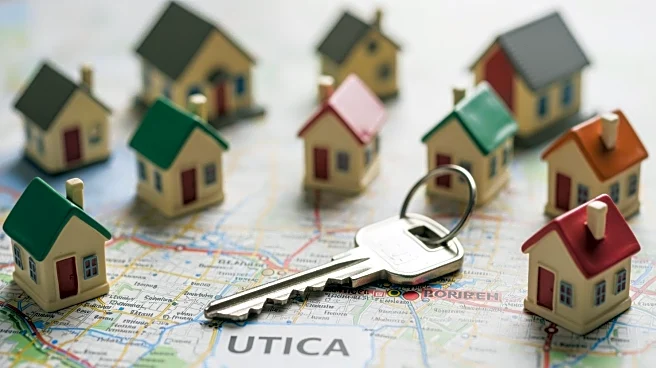What's Happening?
Home prices in Charleston, South Carolina, are beginning to normalize, yet they remain high, influenced by near record-high mortgage rates. This situation is prompting potential homeowners to look beyond expensive urban areas, especially as remote work
becomes more prevalent. According to data from Realtor.com's Cross-Market Demand Report, Charleston residents are increasingly considering homes in nearby cities such as Charlotte, NC, and Greenville, SC, where median listing prices are comparatively lower. The report highlights that even a small increase in mortgage rates can significantly impact monthly payments, making affordability a critical issue for buyers.
Why It's Important?
The shift in home buying patterns in Charleston reflects broader national trends where high mortgage rates are reshaping real estate markets. This could lead to increased demand in suburban and rural areas, potentially driving up prices in these regions. For local economies, this trend might result in a redistribution of economic activity, with businesses and services following the migration of residents. Additionally, the real estate industry may need to adapt to changing consumer preferences, focusing more on affordability and remote work-friendly locations.
What's Next?
As mortgage rates continue to influence home buying decisions, real estate markets in suburban and rural areas may experience growth. This could lead to increased development and investment in infrastructure to support new residents. Local governments might need to address zoning and planning to accommodate the influx of new homeowners. Furthermore, real estate agents and developers may focus on marketing properties that cater to remote workers, emphasizing features like home offices and high-speed internet access.
Beyond the Headlines
The trend of expanding home searches could have long-term implications for urban planning and environmental sustainability. As more people move away from city centers, there may be increased pressure on transportation networks and public services in suburban areas. Additionally, this shift could impact social dynamics, with potential changes in community structures and local governance. Environmental considerations, such as the impact of increased commuting and development on natural landscapes, may also become more prominent.













